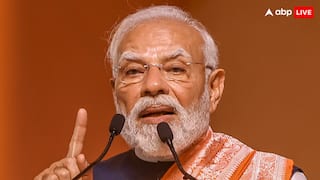Explorer
2019: Year Of Several New Beginnings For Indian Space Sector
The year also saw ISRO and Department of Space (DoS) taking firm steps towards setting up of second rocket launch pad in Tamil Nadu; flying Indian rockets with indigenously developed navigation processor chip; formation of NewSpace India Limited to involve private sector in making rockets and also taking over the commercial activities of Antrix Corporation.

The year 2019 was a year of several new beginnings for India's space sector that is now on Mission 2.0 mode.
New Delhi: The year 2019 is nearing its end. But this year saw several new beginnings in India's space sector that is now on Mission 2.0 mode. Besides, the year also saw the Indian Space Research Organisation (ISRO) scoring a couple of half-centuries, like putting into orbit 50 foreign satellites, sending up its 50th Polar Satellite Launch Vehicle (PSLV) and not to forget, India's Chandrayaan mission. However, the one jarring note in the success symphony was the crash landing of India's moonlander Vikram on the lunar surface. The year also saw ISRO and Department of Space (DoS) taking firm steps towards setting up of second rocket launch pad in Tamil Nadu; flying Indian rockets with indigenously developed navigation processor chip; formation of NewSpace India Limited to involve private sector in making rockets and also taking over the commercial activities of Antrix Corporation. The NewSpace India had issued an Expression of Interest (EoI) for first manufacturing five Polar Satellite Launch Vehicle (PSLV) rockets from private sector. Satellite Launches The year 2019 witnessed the ISRO touching the mark of 319-foreign satellite launches; deciding to go for another moon landing mission called Chandrayaan-3; setting up Human Space Flight Centre; starting the young scientist programme; signing agreement with Indian Air Force (IAF) to select and train Indian astronauts for the country's manned mission. The space agency also laid the foundation stone for a centre to monitor and protect high value space assets from space debris. The ISRO began the year with the launch of defence imaging satellite "Microsat R" for the Defence Research and Development Organisation (DRDO). Later in March, the DRDO shot down Microsat R to demonstrate its anti-satellite missile prowess. During 2019, ISRO also launched several earth observation satellites like the Emisat, an electronic intelligence satellite for DRDO, Cartosat-3, radar imaging satellites RISAT-2B, and RISAT-2BR1. As India's eyes in the skies, these satellites will serve the needs of strategic sectors. In the communication satellite space, the ISRO launched the country's 40th communication satellite GSAT-31 by an Ariane 5 rocket belonging to Arianespace. On the rocket side, while ISRO flew its 50th PSLV and also launched two new variants of the rocket- PSLV-DL (with two strap-on motors) and PSLV-QL (with four strap-on motors). The space agency flew a PSLV rocket in three orbits during the same mission and also used the fourth stage as an orbital platform carrying three experimental payloads. The space agency also gave finishing touches to its new rocket-Small Satellite Launch Vehicle (SSLV) with a capacity to carry 500 kg. The rocket is expected to be flown next year. In June, ISRO Chairman K. Sivan surprised the nation by announcing that the country would build its own 20-tonne space station in the next 5ive to seven years' time after the first manned mission. Chandrayaan-2 mission Between July-September the focus was on the country's second moon mission-Chandrayaan-2. On July 22, the Rs 375 crore, heavy lift Geosynchronous Satellite Launch Vehicle (GSLV-Mk III) rocket slung the Rs 603 crore, 3.8-ton Chandrayaan-2 spacecraft in its intended earth parking orbit. The Chandrayaan-2 spacecraft comprised of three segments -- the Orbiter (weighing 2,379 kg, eight payloads), the lander 'Vikram' (1,471 kg, four payloads) and rover 'Pragyan' (27 kg, two payloads). Everything went off well as regards the moon mission was concerned till the fateful early morning of September 7 when Vikram that was racing to set its foot on the moon crashed into lunar surface at a very great speed and broke into pieces. While ISRO had said it had found Vikram's debris on Sep 8 itself, it did not release any image in support. The Indian space agency had also sought the assistance of US space agency NASA in locating Vikram on the moon's surface. It was only recently a Chennai based 33-year old mechanical engineer Shanmuga Subramanian originally from Madurai and now a Technical Architect at Lennox India Technology Centre who spotted the Vikram debris on the pictures released by US space agency NASA. The US space agency NASA has credited him for discovering the debris of Vikram. The one consolation is the functioning of the Chandrayaan Orbiter. Meanwhile, the year also saw ISRO putting into orbit 50 foreign satellites for a fee and also flying the 50th PSLV rocket. According to Sivan, PSLV has lifted a total of 52.7 ton till date and out of that 17 per cent consists of customer satellites. Sivan said the space agency has several more missions lined up in 2020 including the inaugural flight of the new rocket SSLV. (with inputs from agencies)
Follow Breaking News on ABP Live for more latest stories and trending topics. Watch breaking news and top headlines online on ABP News LIVE TV
Read more

Sayantan Ghosh
Opinion





































